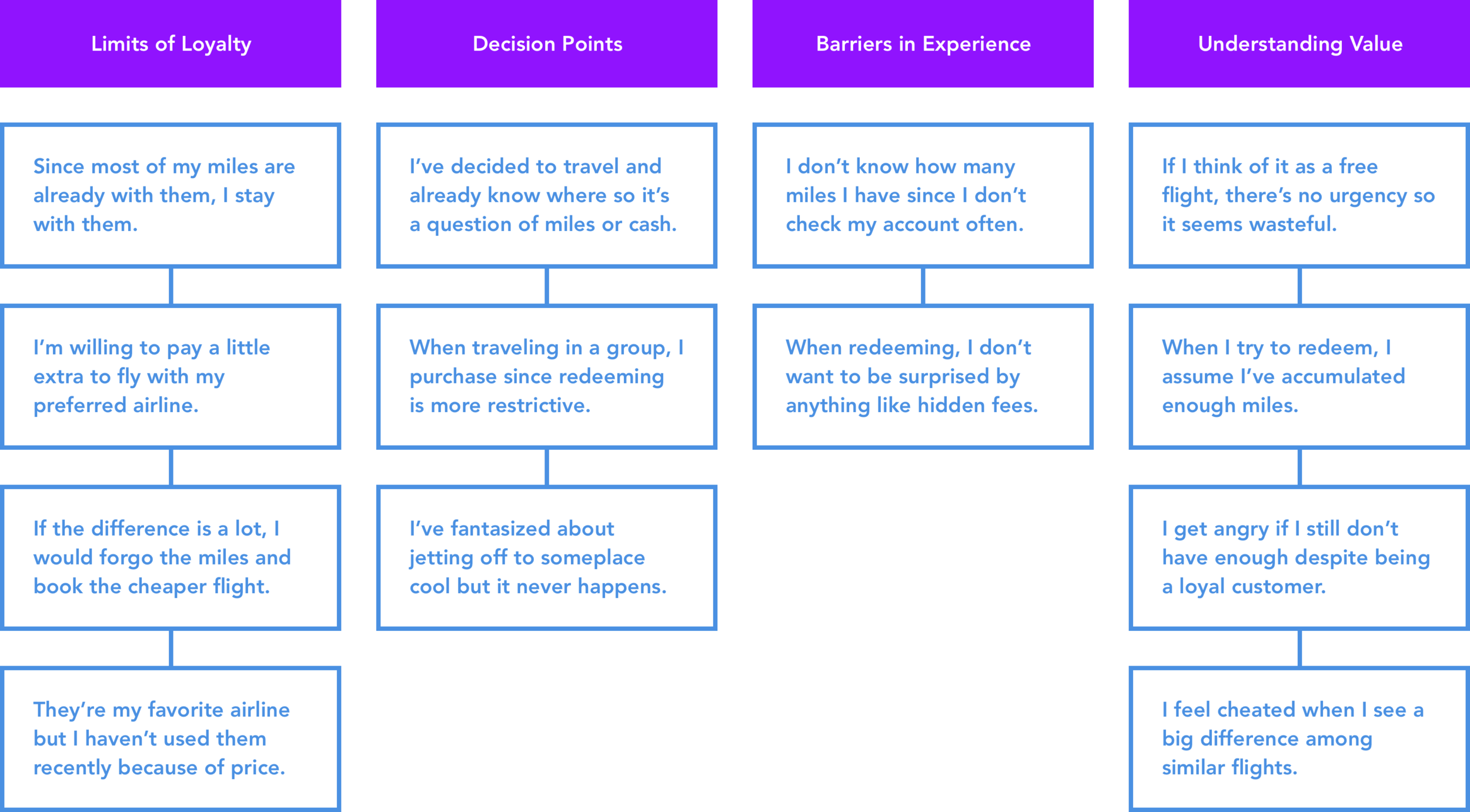Award Miles Redemption
One of the best ways to save on travel is redeeming miles for a flight. While it’s satisfying to get a ticket for almost nothing, redeeming miles is frustrating. I worked on this redesign of the award redemption experience to streamline the decision-making process and increase customer loyalty. This was the final project for a product design course and I am not affiliated with American Airlines.
Problem
If you are part of an airline's loyalty program, you can earn miles every time you fly with them and eventually redeem a flight. Earning miles can be a fun game. Redeeming miles, however, is frustrating because existing experiences are difficult to use and as a result, miles can go to waste.
Research
I conducted interviews to understand how my target audience currently uses award miles.
1. Just because something can be done doesn't mean it will be done.
I hypothesized users with miles available are eager to redeem them and need a tool to show them where they can go. This turned out to be false. Users may fantasize about free flights but won't follow through because redeeming miles without a need is wasteful.
2. The decision isn't over where to go but rather how to get the ticket.
By the time most users interact with an airline, they've already decided on a destination. The question now is whether to redeem or purchase. Even if users have miles available, they need to decide what's the best deal.
3. Miles are understood to have value but users aren't sure how much.
In order to decide, users assess value but they're not very good at it, estimating based on what they're able to accomplish. If they can redeem a flight, miles feel valuable. If they can't, miles feel worthless and users might question why they remain loyal customers.
User Persona
15 Vacation Days Victor
Early to Late 20s / City Dweller Earns / $80K to $100K
Behavior
Victor believes leisure travel is a necessity and expects to travel a few times throughout the year but the trips haven’t been planned yet. He's budget conscious but has a fair amount of disposable income and thus looking for the best deal rather than the cheapest option.
Needs
He needs to book a flight and has miles available due to being a frequent flier and loyalty program member. He needs to decide whether to redeem or purchase.
Pain Points
It’s not immediately clear which option is the better deal. Victor wants to save money but doesn’t want to feel cheated out of his miles so he needs to perform multiple searches and compare the cost of redeeming with the cost of purchasing.
Objective
Design an experience that helps users decide whether to redeem or purchase a flight as well as effectively assess value.
Competitive Analysis
User Control
American Airlines and JetBlue allows users to specify they want to redeem a flight immediately, giving a sense of control. Virgin America doesn't provide that choice until later and the use of progressive disclosure to divide the experience into simpler steps magnifies the lack of control.
Consistent Experience
JetBlue and Virgin America's redeem experiences are the same as their purchase experiences meaning users are navigating something familiar. American Airlines' redeem experience is completely different from their purchase experience and counterintuitive.
Information Disclosure
When redeeming, users are still responsible for taxes and fees. JetBlue and Virgin America immediately disclose how much but American Airlines doesn't reveal the amount until checkout. American Airlines also uses terminology without providing definitions. Words like "AAnytime" are important to their pricing strategy but probably doesn't mean anything to most users.
Compare Values
All three experiences allow users to view cost in miles or cost in dollars but not both simultaneously. In order to compare options, users need to toggle back and forth.










